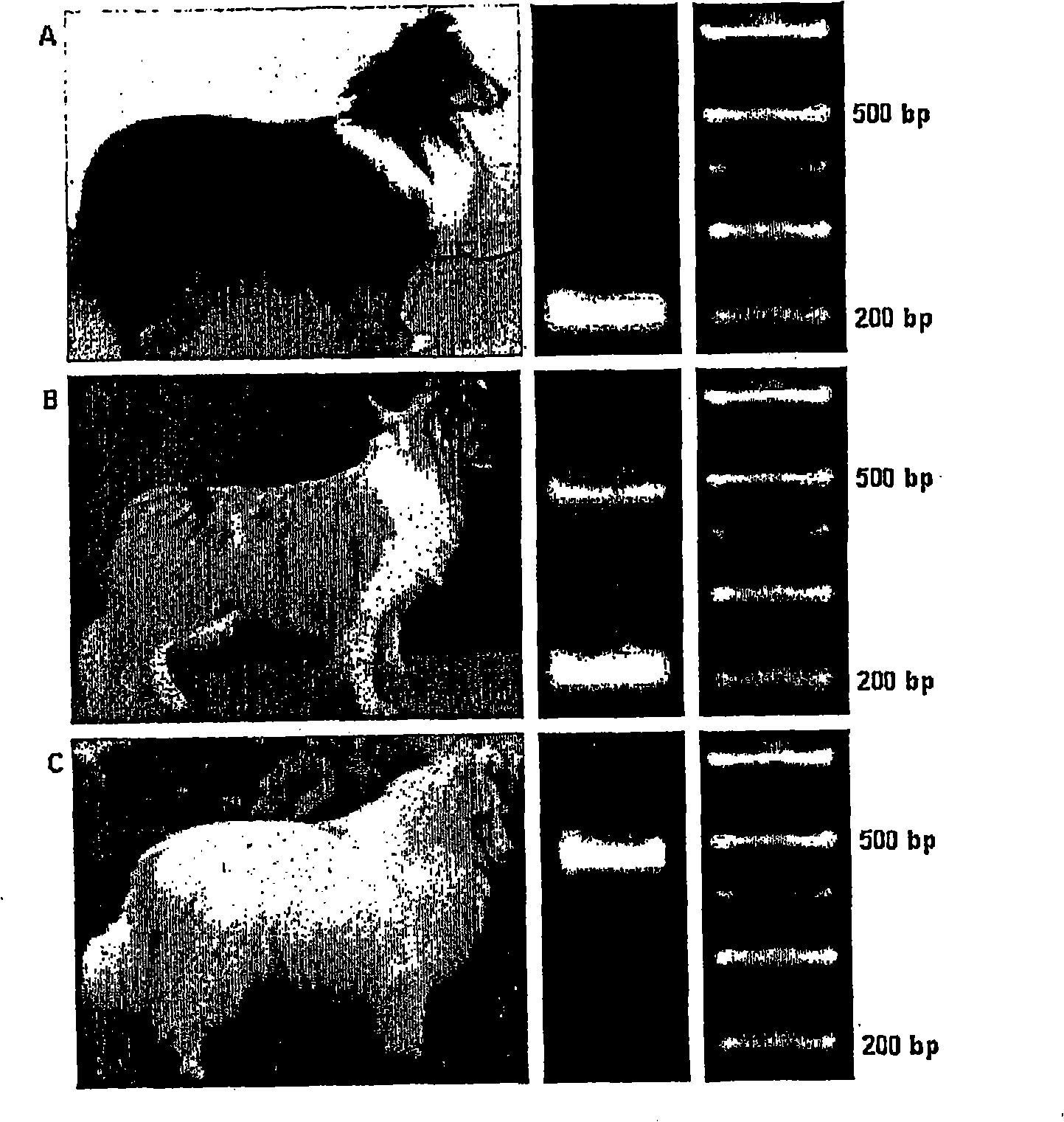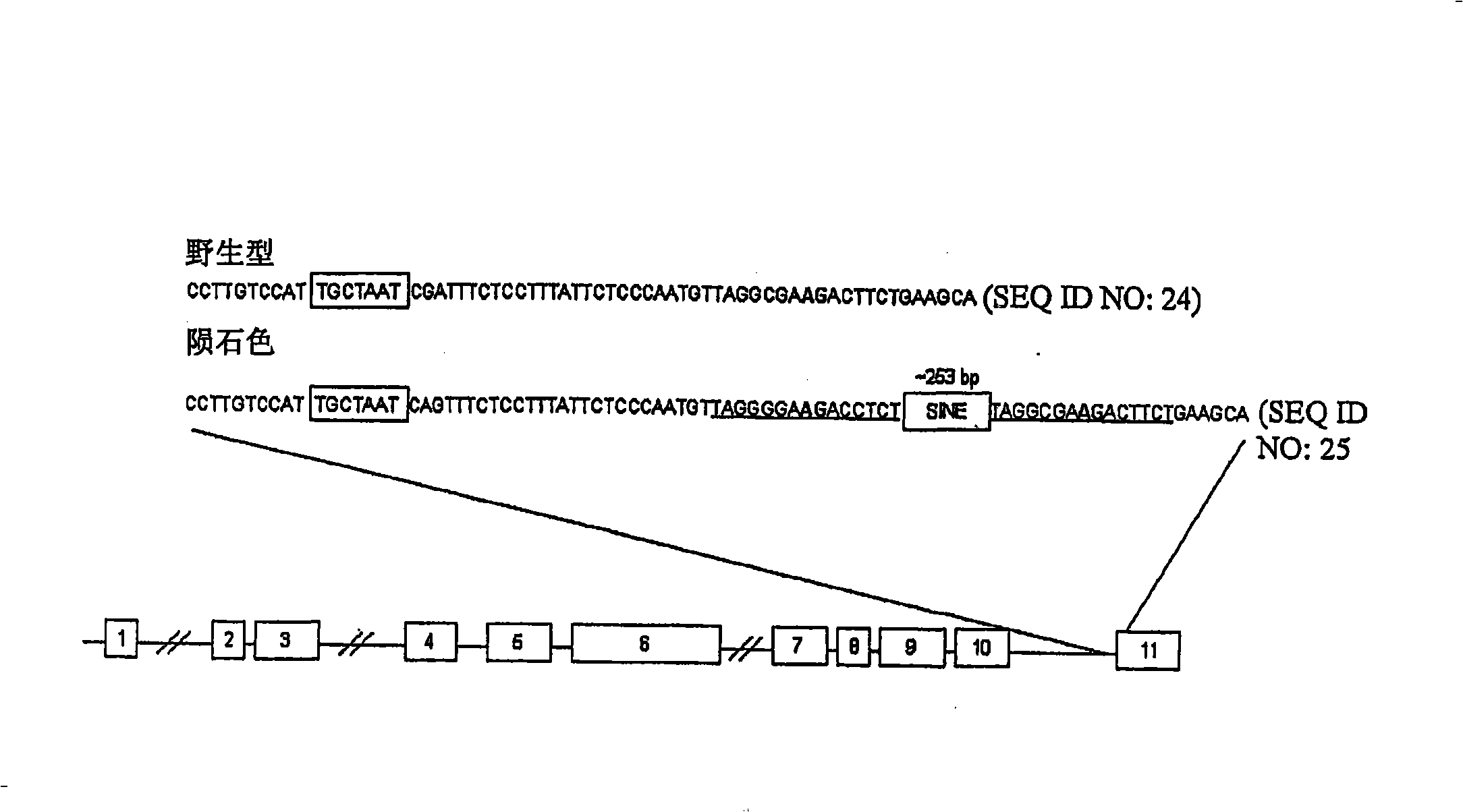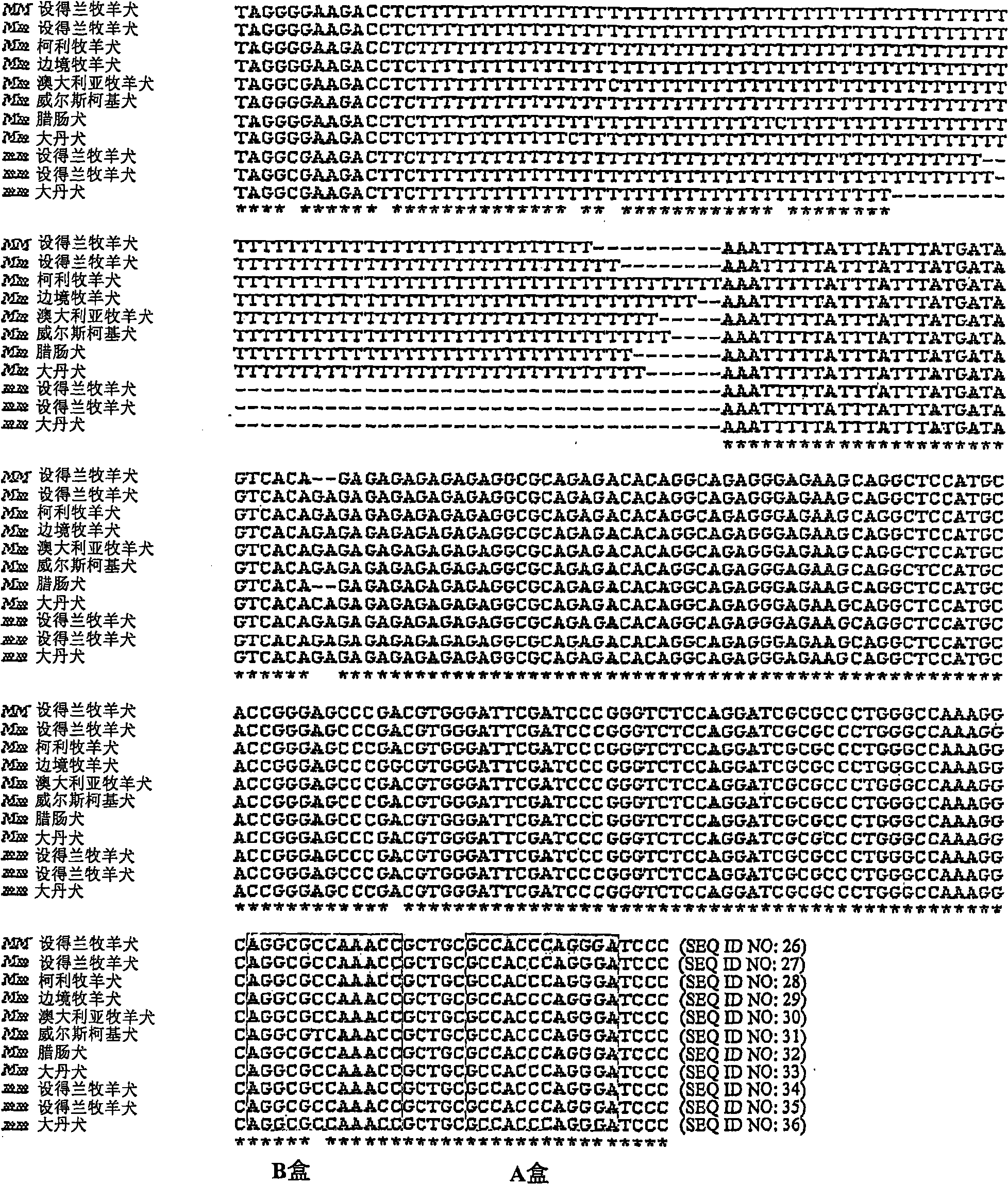Methods for identification of merle gene
一种基因、陨石的技术,应用在狗的遗传检验领域,能够解决陨石色基因没有被确定等问题
- Summary
- Abstract
- Description
- Claims
- Application Information
AI Technical Summary
Problems solved by technology
Method used
Image
Examples
Embodiment 1
[0116] Embodiment 1: the screening of merle gene
[0117] Materials and methods
[0118] Sample Collection DNA samples were obtained from previous studies conducted at the Canine Genetics Laboratory at Texas A&M University, as well as through donations from participating owners and breeders. Whole blood or buccal cells were collected from all dogs, and genomic DNA was isolated using the Puregene DNA Isolation Kit (Gentra Systems, Minneapolis, MN, USA).
[0119] Genotyping Fluorescently labeled primers were synthesized and multiplex PCR was performed for the MSS-2 marker as described in Clark et al. (2004). PCR products were resolved using an ABI 3730x1 DNA Analyzer (PE Biosystems) with internal size standards (GeneScan 500LIZ, PE Biosystems, Foster City, CA, USA). use Software v3.5 (PE Biosystems) determined genotypes.
[0120] Linkage Analysis 41 Shetland Sheepdogs were used for LD analysis of all genotyped MSS-2 markers. For each marker, the allele more commonly asso...
Embodiment 2
[0132] Example 2: Determination of the variety specificity of the merle gene
[0133] To determine whether mutations in SILV caused merle patterns in the Shetland Sheepdog population were breed-specific, a pair representing six other breeds (collie, Australian shepherd, dachshund, Welsh corgi , Border Collie and Great Dane) insertion sequences from merle and non-merle dogs were analyzed. Merle dogs from all other breeds were heterozygous for this insertion (Figure 4).
[0134] Eleven brindle Great Danes were also analyzed: 9 were only heterozygous and 2 were only homozygous for the insertion. Sequence analysis showed that dogs from the above breeds had the same SINE insertion sequence in intron 10. An additional 29 dogs representing 26 non-merle breeds, which did not have the insertion, were analyzed.
[0135] Results overview
[0136] Insertion sequences were analyzed for 60 Shetland Sheepdogs used for linkage studies that segregated completely with the merle phenotype....
PUM
 Login to View More
Login to View More Abstract
Description
Claims
Application Information
 Login to View More
Login to View More - R&D
- Intellectual Property
- Life Sciences
- Materials
- Tech Scout
- Unparalleled Data Quality
- Higher Quality Content
- 60% Fewer Hallucinations
Browse by: Latest US Patents, China's latest patents, Technical Efficacy Thesaurus, Application Domain, Technology Topic, Popular Technical Reports.
© 2025 PatSnap. All rights reserved.Legal|Privacy policy|Modern Slavery Act Transparency Statement|Sitemap|About US| Contact US: help@patsnap.com



